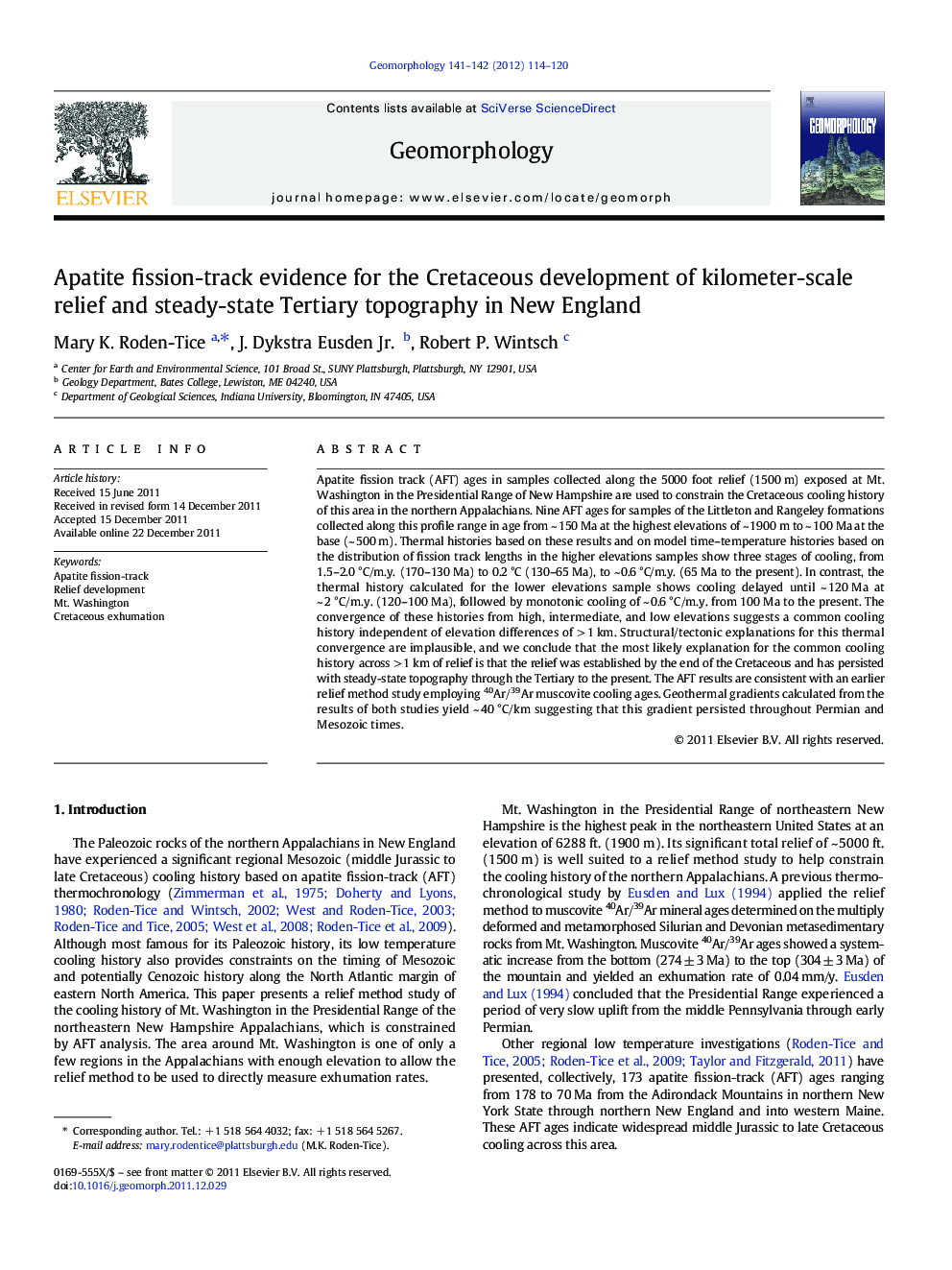| Article ID | Journal | Published Year | Pages | File Type |
|---|---|---|---|---|
| 6432960 | Geomorphology | 2012 | 7 Pages |
Apatite fission track (AFT) ages in samples collected along the 5000 foot relief (1500 m) exposed at Mt. Washington in the Presidential Range of New Hampshire are used to constrain the Cretaceous cooling history of this area in the northern Appalachians. Nine AFT ages for samples of the Littleton and Rangeley formations collected along this profile range in age from ~ 150 Ma at the highest elevations of ~ 1900 m to ~ 100 Ma at the base (~ 500 m). Thermal histories based on these results and on model time-temperature histories based on the distribution of fission track lengths in the higher elevations samples show three stages of cooling, from 1.5-2.0 °C/m.y. (170-130 Ma) to 0.2 °C (130-65 Ma), to ~ 0.6 °C/m.y. (65 Ma to the present). In contrast, the thermal history calculated for the lower elevations sample shows cooling delayed until ~ 120 Ma at ~ 2 °C/m.y. (120-100 Ma), followed by monotonic cooling of ~ 0.6 °C/m.y. from 100 Ma to the present. The convergence of these histories from high, intermediate, and low elevations suggests a common cooling history independent of elevation differences of > 1 km. Structural/tectonic explanations for this thermal convergence are implausible, and we conclude that the most likely explanation for the common cooling history across > 1 km of relief is that the relief was established by the end of the Cretaceous and has persisted with steady-state topography through the Tertiary to the present. The AFT results are consistent with an earlier relief method study employing 40Ar/39Ar muscovite cooling ages. Geothermal gradients calculated from the results of both studies yield ~ 40 °C/km suggesting that this gradient persisted throughout Permian and Mesozoic times.
⺠We determined nine apatite fission-track ages for Mt. Washington, NH. ⺠Apatite fission-track ages ranged from 151 Ma (summit) to 101 Ma (base). ⺠Using an elevation difference of 1.4 km, we found a geothermal gradient of 40 °C/km. ⺠Differential exhumation of summit and base areas occurred from ~ 120 to 100 Ma. ⺠The relief was most likely established by the end of the Cretaceous.
